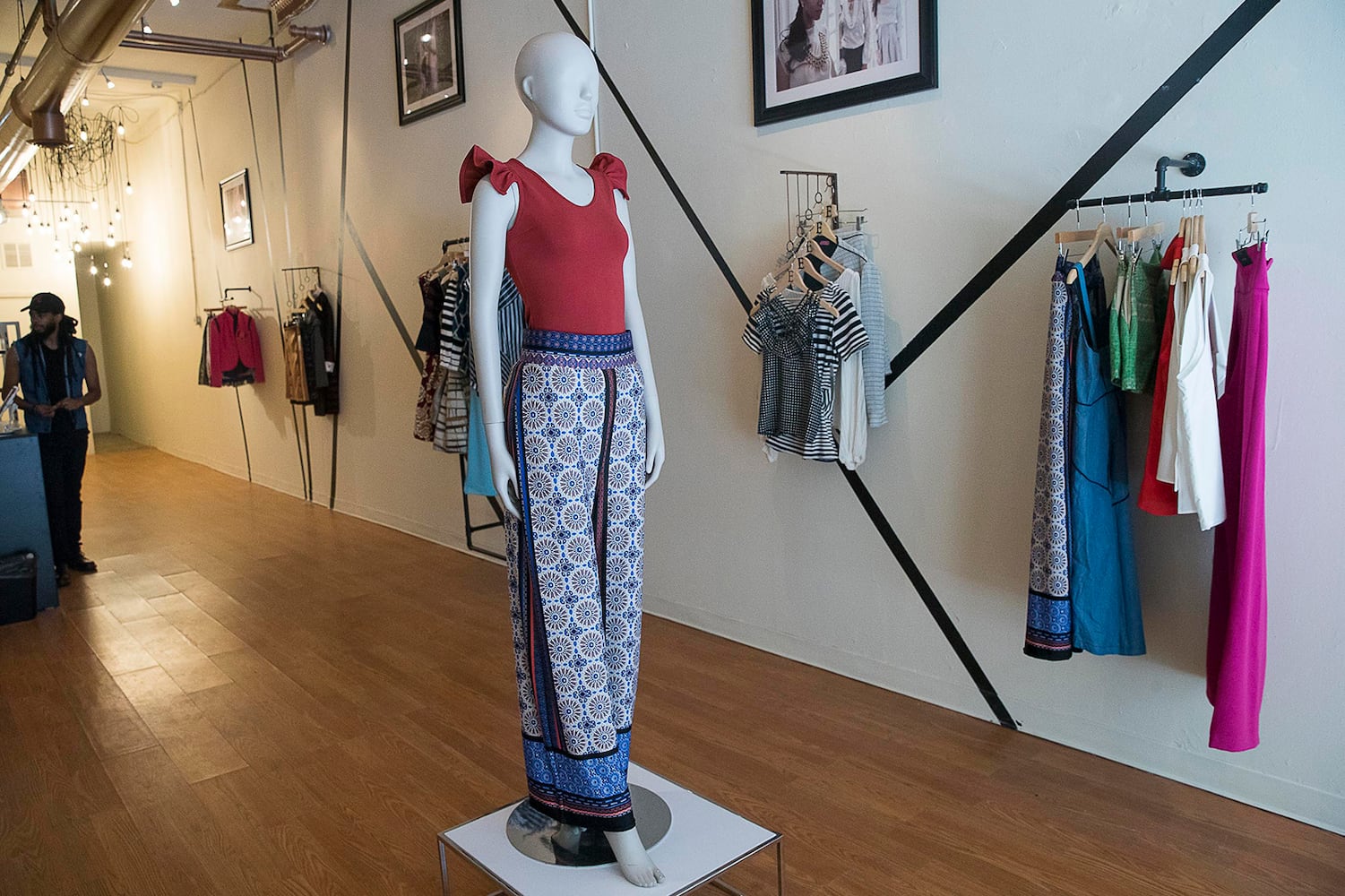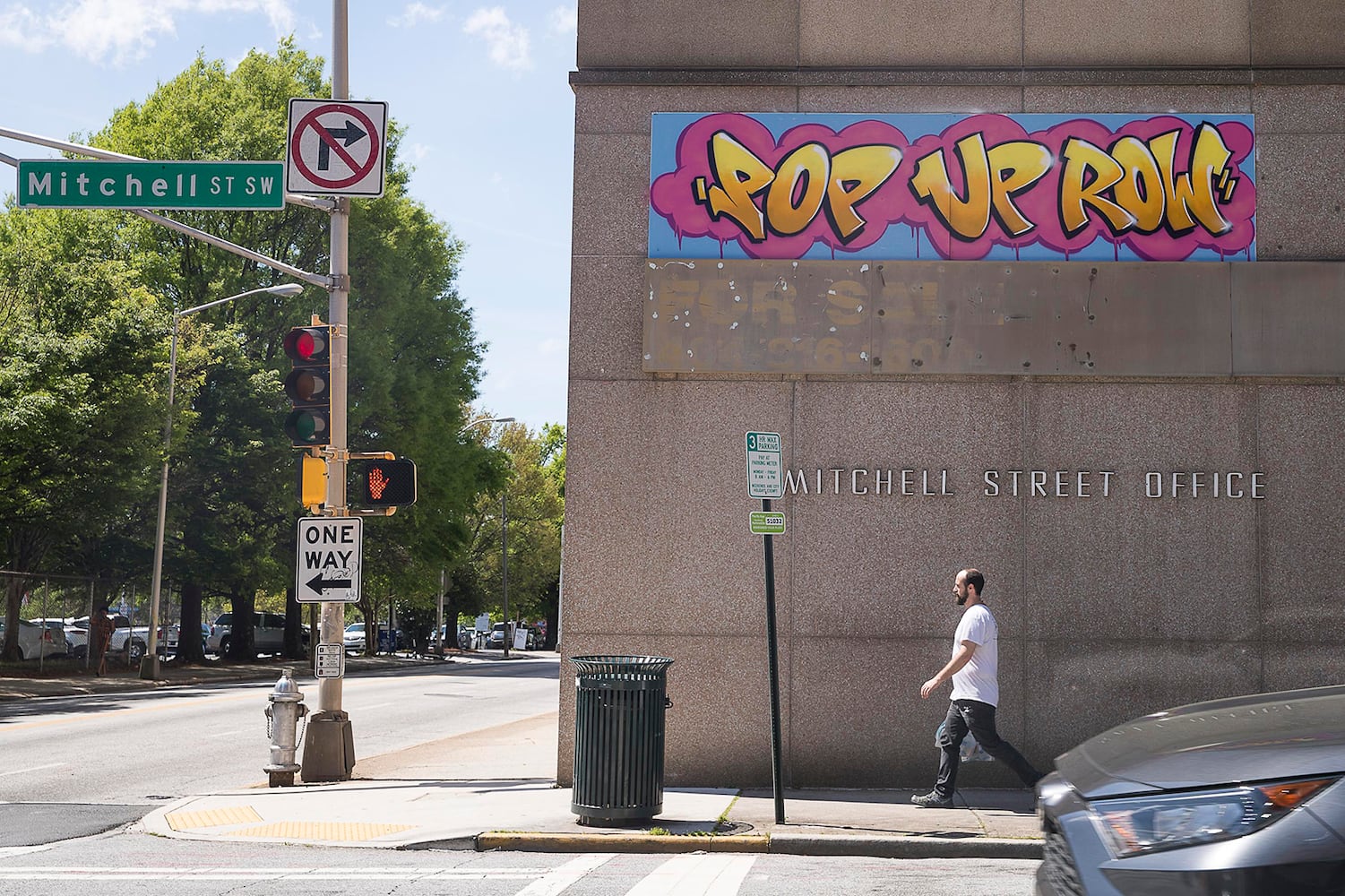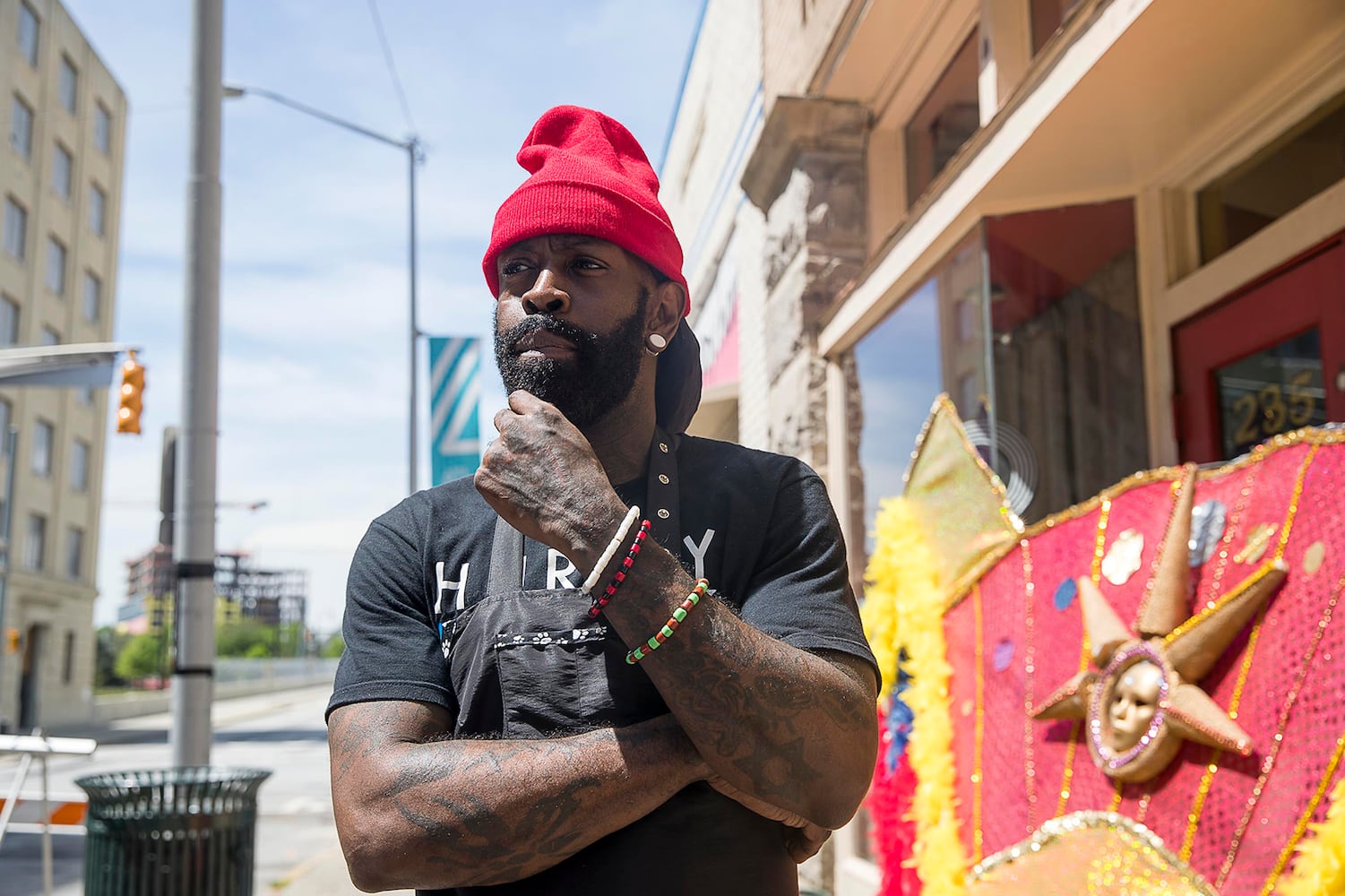The commotion on Mitchell Street amazed passerby Lavina Vance.
“They’ve got balloons and music playing. There are people out walking. They’ve got food trucks,” she gushed to a friend after seeing a string of new shops.
The little jolt of shopping activity is temporary for a long-neglected stretch of south downtown Atlanta. But some see it as a hint of far bigger things to come.
A developer gave eight pop-up shops rent-free space in formerly shuttered storefronts. The pop-ups launched last week in buildings erected more than 100 years ago as hotels near what was once the city’s bustling train station.
» TORPY AT LARGE | Another 'chance of a lifetime' awaits South Downtown
» FROM 2017 | Wait, the next hot intown Atlanta place is where?
The new retailers — offering everything from custom-made hats to cold-pressed juices to a young local designer’s line of women’s clothing — will stay open through July. They’re supposed to be generating buzz and giving retailers and customers a taste of the area’s promise.
Developer Newport US plans to renovate the buildings and others nearby. It expects to fill them with restaurants, offices, shops and apartments.
It’s been decades since most of south downtown flourished. Yet it is a short walk from places teeming with people: federal office buildings, CNN Center, Mercedes-Benz Stadium, Atlanta City Hall, courthouses, Fulton County offices, Georgia’s state Capitol.
Sidewalk traffic, modest as it was for Newport’s pop-ups on launch day, surprised some downtowners, including Vance, a hospice nurse whose office is two blocks away. She regularly takes lunchtime walks down Mitchell, but never stopped because, she said, it didn’t seem like there was much to stop for.
Jennifer Glaze, who works at city hall and lives on Atlanta’s west side, remembered how in the 1970s she and her friends would love to come downtown and ride a bus along Mitchell Street.
“We really need to revitalize the city,” she said. “It used to be alive.”
Jake Nawrocki, the president of local operations for Germany-based Newport, calls south downtown “the hole in the doughnut” of Atlanta. Broadly speaking, he said, “no one has cared about this area for 75 years.” He recalled that a top local business leader referred to it as “the drain.”
The area has a scattered lineup of small businesses and pioneering residents. Also, vacant buildings, weedy parking lots and people without homes.
Newport began acquiring the first of nearly 50 buildings in 2016, with three-fourths of the space sitting vacant. A lot of them — stretching south from the Five Points MARTA station — need substantial improvements. Nawrocki said he plans to have dining and drinking spots open in the summer of 2020, followed by offices in early 2021 in a former C&S bank building that has been vacant since the early 1990s.
“We know this is an uphill climb,” he said.
Yet he predicts more than 5,000 people will live in the area within 10 years. He said that’s what has happened around other key intown places that got a spark, from Ponce City Market and Old Fourth Ward to Atlantic Station.
So far, Newport has been promised up to $8 million by the city’s economic development agency, in return for meeting certain requirements, including providing lower rents for 20 percent of related project space.
The company isn’t alone in its bets in and around south downtown.
South Carolina-based WRS is renovating long-struggling Underground Atlanta and surrounding properties, for residential, retail, entertainment and office spaces.
Credit: Alyssa Pointer
Credit: Alyssa Pointer
And CIM Group, based out of Los Angeles, has proposed a $5 billion office, residential, retail and hotel project on 40 acres that include The Gulch, a desolate and cavernous area traversed by railroad tracks. CIM started renovating two former Norfolk Southern buildings where signs say loft apartments are "coming soon." When contacted by The Atlanta Journal-Constitution, the company did not offer specific timing for when the units will be occupied.
After bitter debates, the Atlanta City Council last fall OK'd up to $1.9 billion of public financing for CIM's overall project, tied to future tax obligations of the site. Proponents predicted jobs and dramatic economic growth for a languishing sector of downtown. (A team from Amazon toured the area as it reviewed potential sites for a headquarters project.) Critics blasted what they saw as corporate welfare, insufficient plans for affordable housing and increased pressure for gentrification nearby.
Concerns about pricing long-time residents and businesses out of the city have hit many neighborhoods where new residents and developers are rushing in. South downtown is somewhat different, in that there aren’t a lot of residents who have been in the immediate area for many years. Still, small-business renters could face pressure.
Big improvements have been promised in the past for south downtown and never met expectations. That includes efforts over the decades to market the area as the Railroad District, develop a mini international town and create a grand government walk of public spaces.
David Albert predicts this time will be different. And he hopes his 11-year-old Mitchell Street dog-grooming business, That Fabulous Dog, will be able to survive in space now owned by Newport. “It’s coming,” he said of the promised development.
Some have already seen hopeful signs. When the Masquerade music venue lost its spot in the booming Old Fourth Ward, it ended up planning to take only temporary space at Underground Atlanta in 2016. Instead it ended up signing a long-term lease as the business improved in the new location.
Masquerade general manager Greg Green, who stopped by the Mitchell Street pop-ups, said proximity to public transit is helping to attract bigger crowds.
At fashion pop-up shop Ennyluap, owner Amanda Williamson and creative director Stephen Philms said they wanted an early foothold in an area they are convinced will be on the upswing.
“We want to have our own footprint with our city and be part of that change,” Williamson said. “Being a creative person, you see things for what they will be, versus what they are.”
Credit: Alyssa Pointer
Credit: Alyssa Pointer
About the Author
The Latest
Featured
























